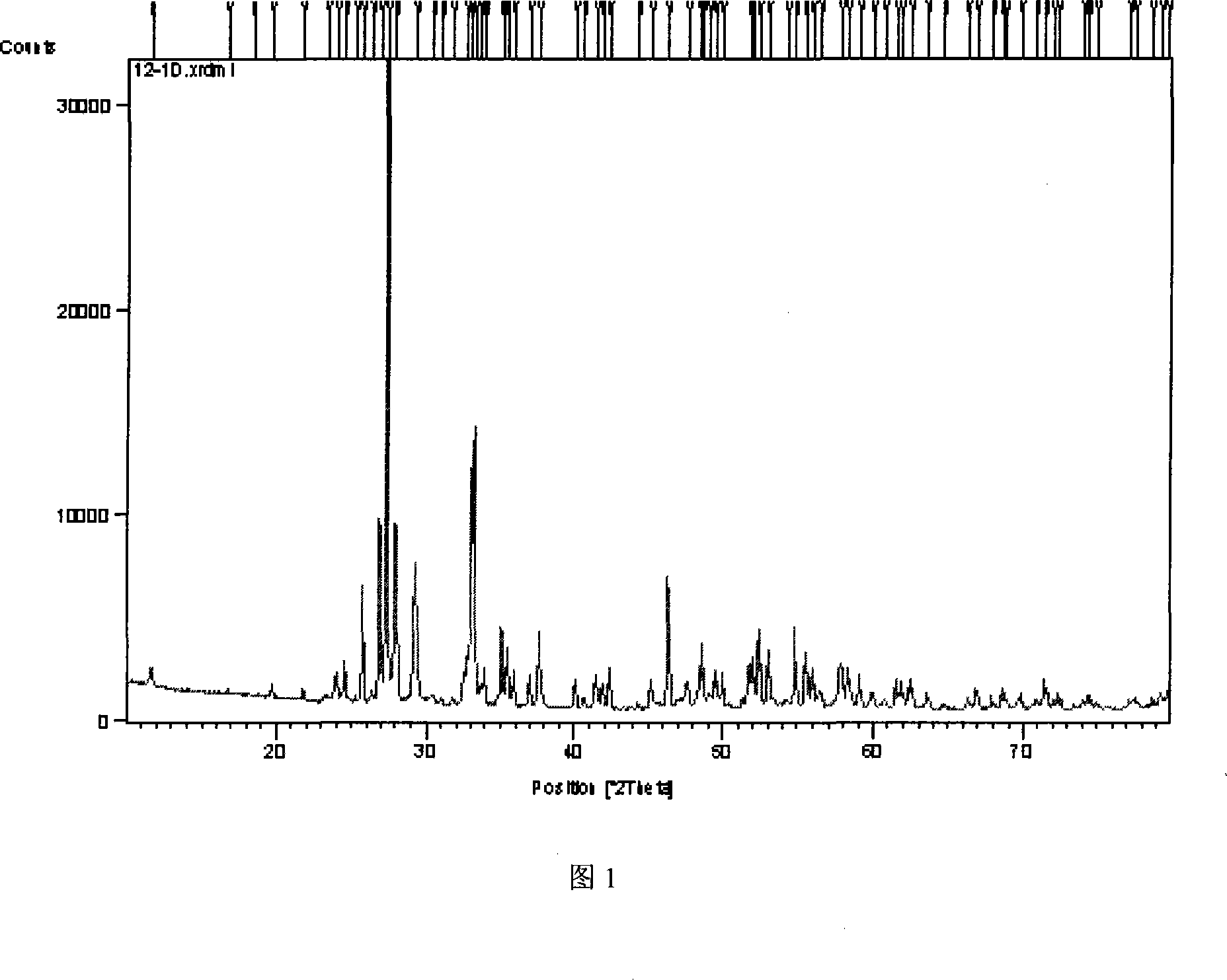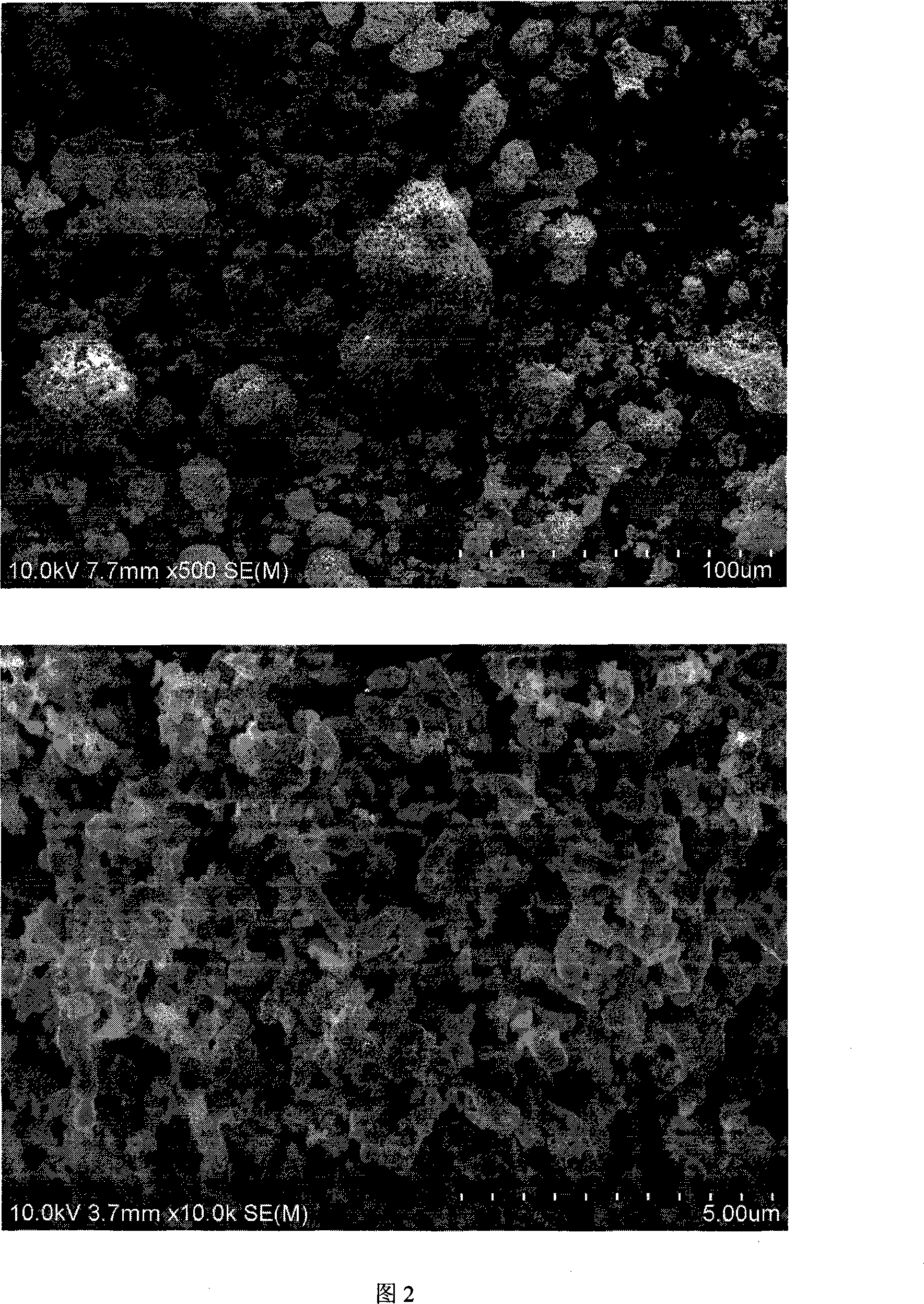A preparation method of bismuth silicate powder photocatalyst
A technology of photocatalyst and bismuth silicate, which is applied in the direction of chemical instruments and methods, physical/chemical process catalysts, silicon compounds, etc., can solve the problems of unable to adsorb organic matter degradation reactions, unable to solve catalyst separation, limited specific surface area, etc., to achieve benefit The effects of industrialization promotion, low requirements for reaction devices, and simple preparation process
- Summary
- Abstract
- Description
- Claims
- Application Information
AI Technical Summary
Problems solved by technology
Method used
Image
Examples
Embodiment 1
[0023] Weigh 4.6 grams of P123 block copolymer surfactant, and dissolve it in 50 milliliters of acetic acid (CH 3 COOH) to form a solution with a concentration of 0.016 mol / liter, stirring continuously until dissolved, then adding 17 grams of bismuth nitrate pentahydrate (Bi(NO 3 ) 3 )·5H 2 O), after dissolving completely, add 0.52 gram of ethyl orthosilicate (Si(OC) dropwise 2 h 5 ) 4 ), the molar ratio of the two is 12:1. Stir vigorously to form a homogeneous and stable sol. Under the condition of stirring, the sol was aged at room temperature for 3 hours, and a small amount of turbid particles appeared, which was the silicon-bismuth composite oxide gel, and then moved to an autoclave for further crystallization at 150°C for 24 hours. The composite oxide gel was precipitated, washed, filtered, evaporated and dried at 120°C to obtain the precursor powder. The obtained precursor powder was calcined in an air atmosphere at a temperature of 550° C. for 3 hours to obtain a...
Embodiment 2
[0025] 7.75 g of F108 block copolymer surfactant was dissolved in 50 ml of acetic acid to form a solution with a concentration of 0.01 mol / liter. Add 16.95 grams of bismuth nitrate pentahydrate to dissolve, add 0.34 grams of methyl orthosilicate (Si(OCH 3 ) 4 ), the molar ratio of the two is 12:1. Stir vigorously to form a homogeneous sol. After aging for 3 hours, move the aforementioned sol to an autoclave, crystallize at 140°C for 36 hours, take it out, wash it, filter, evaporate and dry at 120°C, and roast it in an air atmosphere at 450°C for 3 hours to obtain silicic acid Bismuth powder photocatalyst, denoted as 2# sample. Its specific surface area is 4.6 m2 / g.
Embodiment 3
[0027] 2.3 grams of P123 block copolymer surfactant was dissolved in 50 milliliters of acetic acid to form a solution with a concentration of 0.008 mol / liter. Add 17.5 g of bismuth nitrate hydrate until completely dissolved, then add 0.52 g of tetraethyl orthosilicate dropwise to form a uniform sol. After aging for 3 hours, the sol was moved to an autoclave, taken out after crystallization at 160°C for 48 hours, washed, filtered, evaporated and dried at 130°C, and the obtained precursor powder was roasted at 380°C for 3 hours to obtain Bismuth silicate powder photocatalyst is recorded as 3# sample. Its specific surface area was 10.1 m2 / g.
PUM
| Property | Measurement | Unit |
|---|---|---|
| Specific surface area | aaaaa | aaaaa |
Abstract
Description
Claims
Application Information
 Login to View More
Login to View More - R&D
- Intellectual Property
- Life Sciences
- Materials
- Tech Scout
- Unparalleled Data Quality
- Higher Quality Content
- 60% Fewer Hallucinations
Browse by: Latest US Patents, China's latest patents, Technical Efficacy Thesaurus, Application Domain, Technology Topic, Popular Technical Reports.
© 2025 PatSnap. All rights reserved.Legal|Privacy policy|Modern Slavery Act Transparency Statement|Sitemap|About US| Contact US: help@patsnap.com



